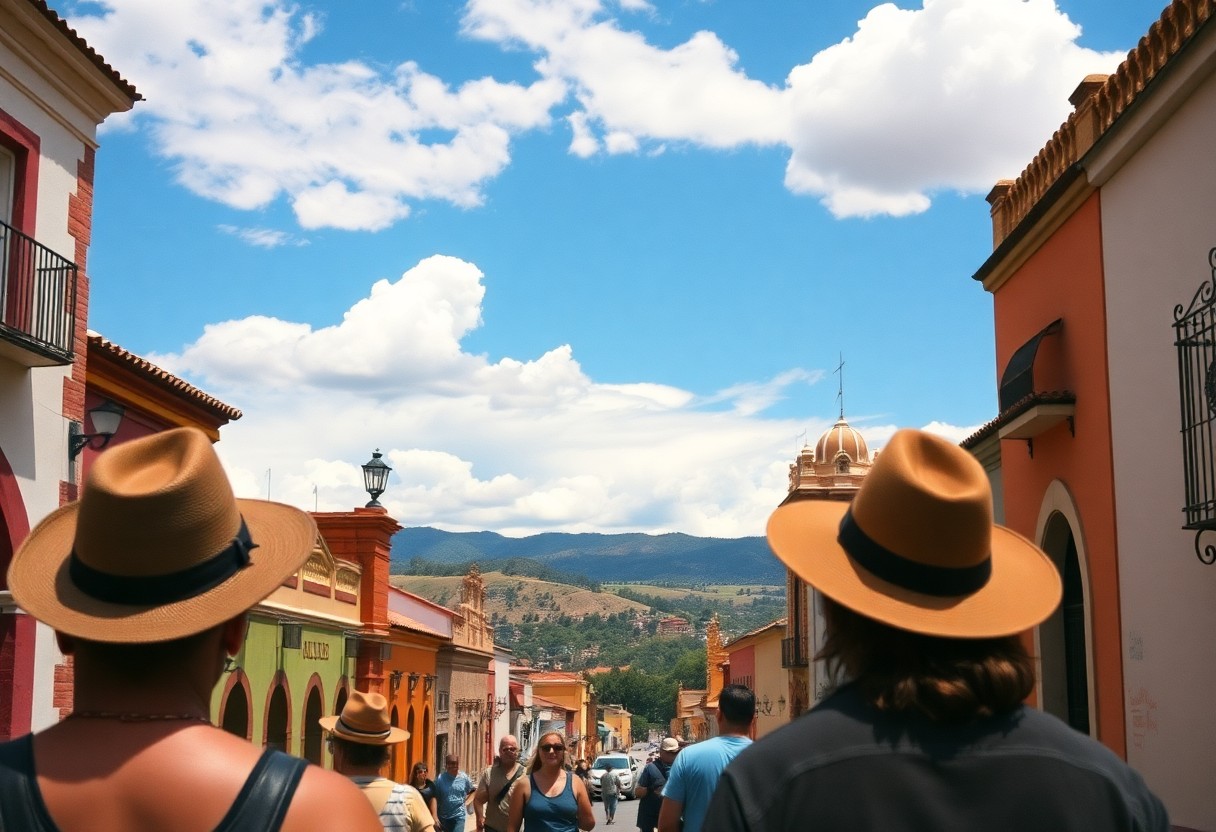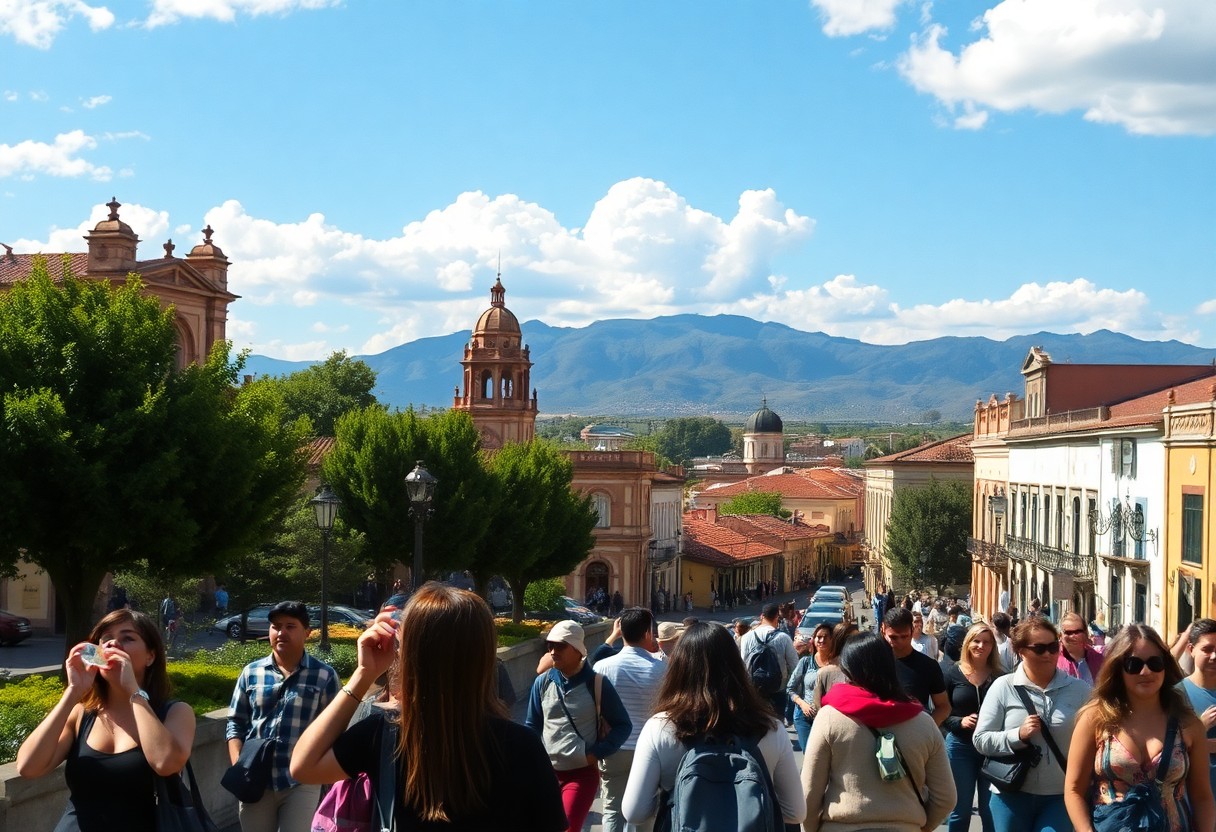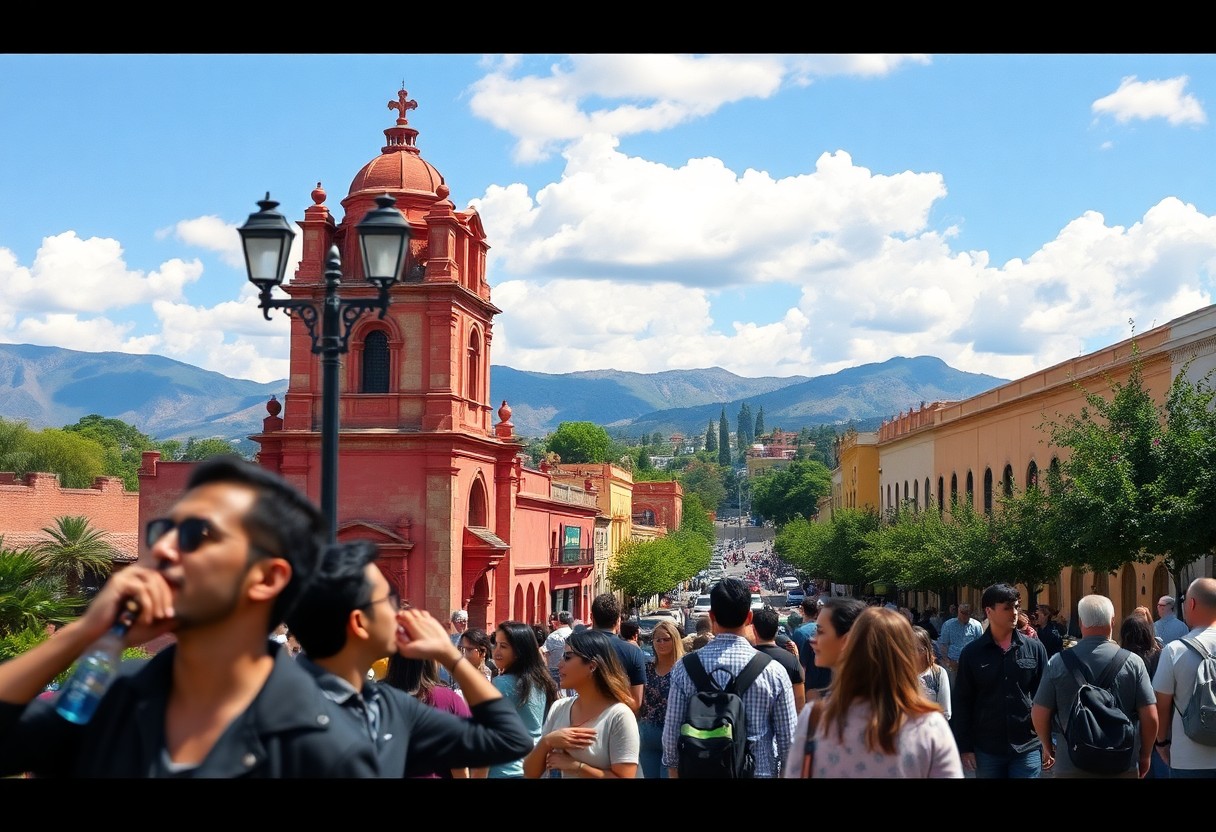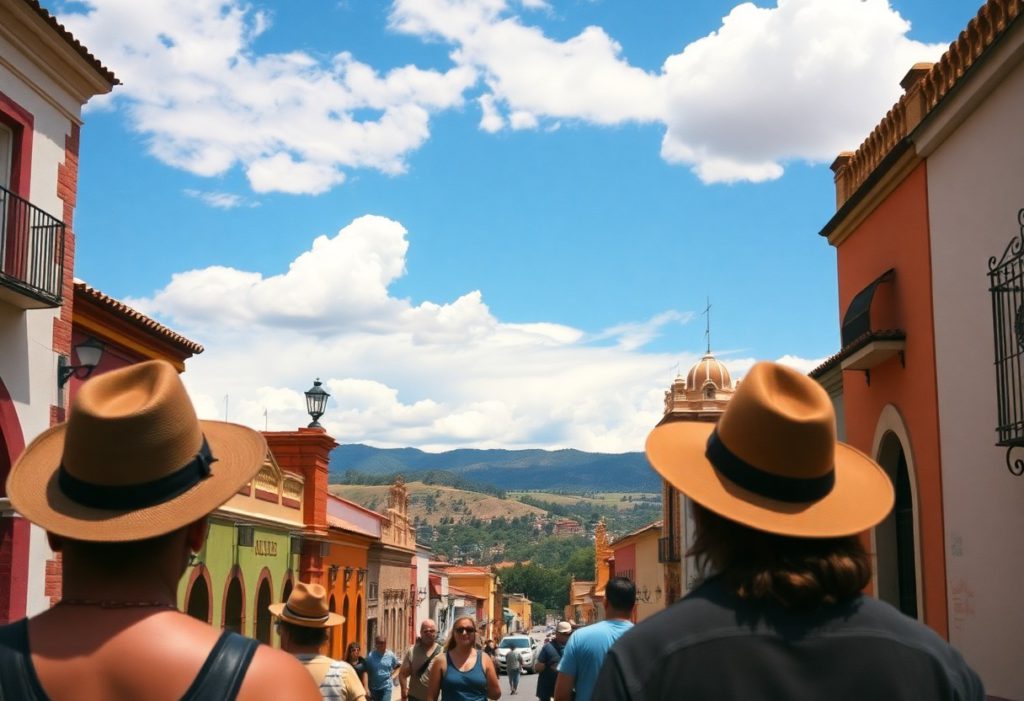San Miguel de Allende is celebrated for its breathtaking beauty and distinctive charm, but the elevation of this stunning city will likely take you by surprise. Positioned at an impressive 6,200 feet above sea level, San Miguel presents unique altitude challenges that can significantly impact your travel experience. As your body begins to adjust to the thinner air, you might encounter symptoms like mild headaches, shortness of breath, and fatigue. Although these effects are typically temporary, they can be uncomfortable for some visitors. By understanding how altitude affects your body and preparing in advance, you can ensure a more enjoyable and comfortable visit to this magnificent Mexican destination. Staying well-hydrated, pacing your activities, and being mindful of your body’s signals will enable you to fully appreciate the high-altitude allure of San Miguel de Allende.

Maximize Your Experience by Understanding the Altitude and Climate of San Miguel de Allende
The high elevation of San Miguel de Allende plays a crucial role in shaping its unique atmospheric conditions, which can significantly impact your travel experience. This enchanting city’s location in the Mexican highlands introduces specific altitude challenges that may affect both your comfort and health during your stay. Being aware of these environmental factors will allow you to prepare effectively and adapt to the local climate, ultimately enhancing your overall enjoyment of this remarkable destination.
Essential Altitude Information for Travelers to San Miguel de Allende
San Miguel de Allende is located at an altitude of approximately 6,132 feet (1,870 meters), establishing it as a notable high-altitude destination. This elevation can trigger physiological reactions in visitors, including mild symptoms of altitude sickness or respiratory changes. During your initial days, you might experience slight breathlessness, especially when participating in physical activities. Understanding this aspect of your trip can help you plan effectively and mitigate any discomfort you may encounter.
Delving into the Climate Characteristics of San Miguel de Allende
The climate in San Miguel de Allende is marked by its mild temperatures and relatively dry conditions, making it an attractive destination throughout the year. Visitors can expect warm days contrasted with cool nights, resulting in significant temperature variations across different seasons. The high-altitude setting contributes to a pleasant climate that consistently attracts numerous international visitors seeking a delightful escape from their everyday lives.
This beautiful city enjoys a semi-arid subtropical highland climate, characterized by distinct dry and rainy seasons. The dry season spans from November to April, presenting sunny days with minimal precipitation. On the other hand, the rainy season, occurring from May to October, introduces refreshing afternoon thunderstorms, revitalizing the landscape. When planning outdoor activities, it’s essential to consider these seasonal variations and dress in lightweight layers to easily adapt to changing temperatures throughout the day.
Identifying Common Altitude-Related Symptoms to Enhance Your Travel Experience
If you’re preparing for a visit to San Miguel de Allende, which rests at an elevation of approximately 6,200 feet, it’s crucial to recognize potential altitude-related symptoms that you might experience. At this considerable elevation, your body may undergo physiological changes that can influence your comfort and health, leading to mild to moderate discomfort during your initial days in this stunning Mexican locale.
Common Symptoms Reported by Visitors at High Altitudes
While exploring San Miguel de Allende, you may encounter a variety of altitude-related symptoms, ranging from mild to more pronounced experiences. Visitors commonly report symptoms such as headaches, fatigue, shortness of breath, and occasional dizziness. Additionally, some travelers experience decreased appetite, mild nausea, and disrupted sleep patterns as their bodies adjust to the increased elevation. Being informed about these symptoms can help you prepare for your trip and respond more effectively to your body’s needs.
Key Factors That Influence Altitude Symptoms Experienced by Visitors
Several critical factors can influence your altitude experience during your stay in San Miguel de Allende:
- Personal fitness level
- Hydration status
- Previous altitude exposure
- Age and overall health
Understanding these factors can equip you with the knowledge necessary to prepare adequately for your visit, ensuring a smoother transition to the high-altitude environment.
A Comprehensive Analysis of Factors Impacting Your Altitude Experience
Various elements contribute to how you might experience altitude in San Miguel. Key factors to consider include:
- Physical conditioning
- Acclimatization speed
- Cardiovascular health
- Genetic predisposition
Recognizing these nuanced influences can significantly impact your adaptation strategy and enhance your overall comfort during your visit.

Proactive Health Tips and Prevention Strategies for Travelers Visiting High Altitudes
Planning a trip to San Miguel de Allende at 6,200 feet elevation requires careful preparation to effectively manage potential altitude effects. It is essential to approach your travel with proactive health strategies that can reduce risks and enhance your overall comfort. By understanding and implementing targeted prevention methods, you can significantly decrease the likelihood of experiencing altitude-related symptoms and fully enjoy your journey in this captivating Mexican city.
Prioritizing Hydration to Combat Altitude Sickness
Preventing altitude sickness fundamentally begins with maintaining excellent hydration. It is advisable to drink more water than usual, aiming for at least 3-4 liters daily. Your body requires increased fluid intake to compensate for elevated respiratory rates and potential fluid loss that occurs at higher elevations in San Miguel de Allende. Staying hydrated is vital for ensuring your body adjusts effectively to the altitude, promoting overall well-being during your visit.
Effective Acclimatization Techniques for a Comfortable Stay
Health experts recommend gradual altitude adaptation strategies for visitors traveling to San Miguel. It is wise to plan your first few days with minimal physical exertion, allowing your body to adjust naturally to the altitude. Engaging in slow movements, taking frequent rest periods, and avoiding strenuous activities will aid your physiological systems in acclimatizing effectively.
Thus, successful acclimatization entails a strategic approach to your daily activities. Spending the initial days at a relaxed pace, incorporating short walks, and paying close attention to your body’s signals will be highly beneficial. Monitoring your energy levels and avoiding rapid ascents can significantly alleviate altitude-related stress, ensuring a more enjoyable experience.
Nutritional Guidance for High-Altitude Travel
In conjunction with hydration, your dietary selections play a pivotal role in altitude adaptation. Consuming high-carbohydrate, low-salt meals can support metabolic processes and help maintain your energy levels. Light, nourishing foods will assist your body’s adjustment to the elevated environment of San Miguel, ensuring you remain energized and comfortable during your stay.
The importance of nutrition cannot be overstated when visiting high-altitude destinations. Focus on easily digestible proteins, complex carbohydrates, and foods rich in potassium. Avoiding heavy, greasy meals while maintaining a balanced diet will support your body’s capacity to adapt to the unique challenges posed by the high elevation of San Miguel de Allende.
Sharing Personal Experiences and Insights from San Miguel de Allende
Throughout my journey in San Miguel de Allende, I witnessed the profound effects of its high-altitude environment. At an elevation of 6,200 feet above sea level, the thin air presented challenges to my physical adaptation, creating a unique experience that reshaped my understanding of travel and personal resilience. The subtle effects of the elevation on my breathing and energy levels offered a fascinating exploration of how our bodies respond to significant geographical changes.
Real-Life Testimonials from Fellow Travelers
Travelers frequently share their unexpected physiological responses to the altitude in San Miguel through personal accounts. Many describe experiencing initial lightheadedness, reduced stamina, and a need to move slowly. Your first days may involve gentle acclimatization, with some visitors encountering mild symptoms such as headaches or slight fatigue, while others adapt more quickly to the elevated environment without any issues.
Practical Coping Mechanisms for Successful Altitude Management
Visitors to San Miguel discover effective strategies for managing altitude-related challenges. It is essential to prioritize hydration, consume lighter meals, and pace your activities. Simple techniques such as deep breathing exercises and taking frequent rest breaks can significantly diminish potential discomfort while you explore this beautiful city.
Successfully coping with altitude requires a comprehensive approach. Your body’s adaptation is influenced by various factors, including physical fitness, hydration levels, and individual physiological responses. Experts recommend a gradual increase in activity levels, avoiding alcohol initially, and opting for foods rich in complex carbohydrates. Consulting local healthcare professionals who are knowledgeable about the specific altitude dynamics of San Miguel de Allende can ensure a safe and enjoyable experience in this remarkable destination.

Expert Guidance on Health Considerations for High-Altitude Travel
When visiting San Miguel de Allende, it is vital to take altitude-related health factors into account. Healthcare professionals strongly advise visitors to prioritize their well-being by understanding the potential physiological challenges that come with being at an elevation of 6,400 feet. Your body requires time to acclimate; implementing proactive strategies can help minimize altitude-related discomfort and improve your travel experience.
Insightful Professional Advice from Healthcare Experts
Among medical experts, there is a clear consensus: gradual acclimatization is your best defense against altitude sickness in San Miguel de Allende. Allowing for rest during your first 24-48 hours, staying well-hydrated, and avoiding strenuous activities is essential for your comfort. Your physician may suggest preventative medications or supplements to assist your body’s adaptation to the higher elevation, ensuring a smoother transition to your travel experience.
Accessing Specialized Health Resources for Visitors
San Miguel de Allende offers comprehensive support for altitude-related concerns, including local clinics and specialized travel health centers. You can find medical professionals who understand the unique challenges posed by high-altitude environments and can provide tailored advice for your specific health needs.
Given the city’s popularity with international travelers, specialized medical resources are readily available. You will encounter English-speaking healthcare providers, diagnostic facilities, and emergency services equipped to manage altitude-related medical issues. Many hotels and tourist centers can provide immediate referrals and assistance, ensuring you receive prompt medical attention should it be necessary.
Key Takeaways for a Memorable Visit to San Miguel de Allende
At elevations above 7,000 feet, San Miguel de Allende presents unique altitude challenges that can significantly affect your travel experience. It is crucial to prepare by staying hydrated, moving at a leisurely pace, and allowing your body ample time to acclimate. During your initial days, you may experience mild symptoms such as shortness of breath or slight headaches, which are common at this altitude. By drinking sufficient water, consuming light meals, and avoiding alcohol during your early stay, you can reduce potential discomfort. Pay close attention to your body, take breaks when needed, and savor the breathtaking beauty of this colonial city without overexerting yourself. By taking the time to prepare thoughtfully, you can ensure a comfortable and unforgettable visit to this high-altitude Mexican gem.
Frequently Asked Questions (FAQ) about Altitude in San Miguel de Allende
What is the elevation of San Miguel de Allende, and why is this elevation significant for travelers?
San Miguel de Allende is located at approximately 6,200 feet (1,890 meters) above sea level. This high altitude can lead visitors to experience mild symptoms, including shortness of breath, headaches, and fatigue. The thinner air at this elevation means reduced oxygen availability, which can negatively impact physical performance and comfort levels for travelers who are not accustomed to mountainous environments.
What altitude-related health precautions should travelers observe when visiting San Miguel?
Visitors should ensure they stay hydrated, consume light meals, and limit alcohol intake during their first 24-48 hours. Gradually engaging in physical activities will assist your body in adapting to the elevation. Walking slowly, resting frequently, and employing deep breathing techniques can help minimize potential altitude-related discomfort. It is advisable for individuals with pre-existing respiratory or cardiovascular conditions to consult a healthcare professional before traveling.
Are there specific times or seasons when altitude effects are more pronounced in San Miguel de Allende?
Altitude effects can be more pronounced during the dry season (November-April) when air is thinner and humidity is lower. Visitors arriving during the winter months may experience heightened symptoms. Daytime temperatures and sun exposure can also increase altitude sensitivity. Wearing layers, staying hydrated, and allowing adequate time for physiological adjustment can help alleviate potential challenges.
The Article: Altitude in San Miguel de Allende: How It Affects Visitors and What to Do About It appeared first on https://fallinginlovewithsanmiguel.com/
The Article Altitude in San Miguel de Allende: Impact on Visitors and Tips Was Found On https://limitsofstrategy.com

